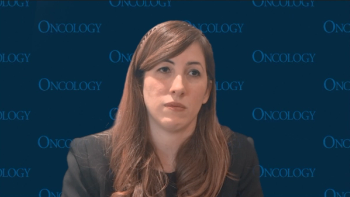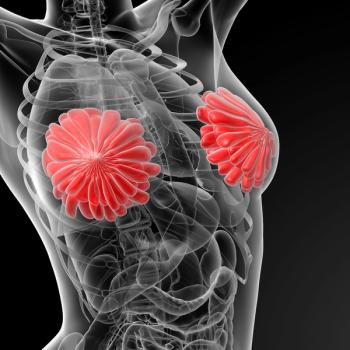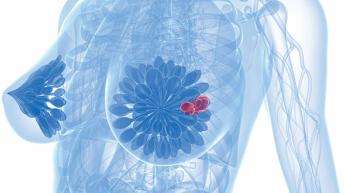
Oncology NEWS International
- Oncology NEWS International Vol 6 No 2
- Volume 6
- Issue 2
Routine Radiotherapy After Breast-Conserving Surgery Appears to Be Cost Effective
SAN ANTONIO-Routine use of radiation therapy after breast-conserving surgery is a cost-effective strategy for improving outcome in breast cancer, a computerized decision-analysis study suggest.
SAN ANTONIORoutine use of radiation therapy after breast-conservingsurgery is a cost-effective strategy for improving outcome in breast cancer,a computerized decision-analysis study suggest.
Radiation therapy adds $10,724 to the cost of conservation, which translatesinto a cost of $30,805 per quality-adjusted life year, well within therange of cost effectiveness established for medical therapies, James A.Hayman, MD, said at his poster presentation.
Dr. Hayman and his colleagues at Dana-Farber and the Medical Collegeof Virginia assessed cost effectiveness in a theoretical cohort of 60-year-oldwomen followed for 10 years after treatment for early-stage breast cancer.
"Routine radiotherapy following conservative surgery has been shownto reduce the incidence of local recurrence, improve quality of life, andreduce costs associated with salvage therapy," said Dr. Hayman, formerlya resident at the Joint Center for Radiation Therapy and currently clinicalassistant professor of radiation oncology at the University of Michigan.
Do Benefits Justify Costs?
He noted that the impact of radiation therapy on survival is unclear,but there is an increased risk of toxicity, as well as increased cost andinconvenience to the patient. "We wanted to find out whether the benefitsof routine radiation therapy following conservation justify its costs,"he said.
The analysis relied on assumptions based on data derived from the NSABPB-06 study. The investigators assumed that radiation therapy would reducethe incidence of local recurrence by 75%, have no impact on overall survival,improve quality of life, and reduce future salvage costs.
They assumed that local recurrence after radiation therapy and breastconservation would be managed by mastectomy, and that patients initiallytreated by breast conservation alone would be managed in equal numbersby mastectomy and by radiation plus surgery in the event of local recurrence.
Benefits Expressed in QALYs
Assessment of nonmetastatic health status was based on data collectedon 97 actual breast cancer patients. Metastatic health status was basedon expert judgment. Cost estimates were derived from Medicare charges,ratios of costs to charges, and relative value units. Benefits were expressedin quality-adjusted life years (QALYs).
The median cost for radiation therapy plus surgery was $28,147, comparedwith $17,423 for breast-conserving surgery alone. The median benefit ofthe two strategies was 7.19 and 6.84 QALYs, respectively, for a differenceof 0.35. A comparison of the cost difference and the benefit differenceresulted in a cost for radiation therapy of $30,805 per QALY.
"This cost is well within the accepted range for cost effectiveness,which is currently felt to be less than $50,000 per QALY," Dr. Haymansaid.
The model was sensitive for variations in the cost of radiation therapy;that is, if a higher estimate, in the $30,000 range, was used, the therapyproved not to be as cost effective. Similarly, eliminating patient fearof recurrence as a quality of life factor pushed the cost outside the acceptedrange.
The model was not sensitive, however, to variations in estimated ratesof local recurrence with and without radiation therapy (5% and 20% vs 10%and 30%). Neither did using different estimates of the cost of salvagetherapy ($6,000 vs $30,000) affect the model. The introduction of a 2%survival advantage with radiation therapy lowered the cost per QALY to$29,942.
Articles in this issue
almost 29 years ago
NCI Launches Trial of High-Dose Chemo for Advanced Ovarian Canceralmost 29 years ago
'More May Be Less' in Metastatic Cervical Canceralmost 29 years ago
At 10 Years, DCIS Patients' Risk of Breast Cancer Death Is Very Lowalmost 29 years ago
Survey Finds 122 New Anti-HIV Medicines Currently Being Testedalmost 29 years ago
President Clinton Unveils National AIDS Policyalmost 29 years ago
Mammotomy May Reduce Biopsy Sampling ErrorsNewsletter
Stay up to date on recent advances in the multidisciplinary approach to cancer.

















































































